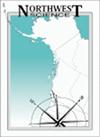Hymenopteran Pollinators Prefer Yellow Flowers to Red Ones in Scotch Broom (Cytisus scoparius (L.) Link), But Not Enough to Negatively Affect Plant Fitness
IF 0.5
4区 环境科学与生态学
Q4 ECOLOGY
引用次数: 0
Abstract
Abstract In well-established flowering plant invasions, floral phenotypes that do not attract pollinators are predicted to be eliminated through natural selection. We explored this hypothesis in the invasive plant species Scotch broom (Cytisus scoparius), which has yellow flowers frequented by a diverse community of bee species, as well as red-tinged flowers that are predicted to be pollinated at a significantly lower rate. We predicted that plants with the red-flower phenotype will have fewer flowers visited, produce fewer seed pods per flower, and produce fewer seeds per pod than the yellow-flowered type. To investigate this, we measured the proportion of flowers pollinated for red- and yellow-flowered phenotypes, observed the number of seed pods produced per flower, and counted seeds per pod. Although we found lower pollination in the red-flowered phenotype, we did not see differences in female fitness. Scotch broom is an invader predicted to be limited in fecundity by the rate of pollinator visits and would be expected to lose phenotypes that attract fewer pollinators. We found the persistence of a less-attractive phenotype, likely because the reduction in male fitness is not paired with a reduction in female fitness.膜翅目昆虫在苏格兰金雀花(Cytisus scoparius (L.))中更喜欢黄花而不是红花链接),但不足以对植物适应性产生负面影响
在成熟的开花植物入侵中,不吸引传粉者的花表型预计将通过自然选择被消除。我们在入侵植物苏格兰雀花(Cytisus scoparius)中探索了这一假设,该植物的黄色花朵经常被各种蜜蜂物种所光顾,而红色花朵的传粉率则明显较低。我们预测,与黄花型相比,红花型的植物会有更少的花被访问,每朵花产生更少的种子荚,每荚产生更少的种子。为了研究这一点,我们测量了红色和黄色花表型的授粉比例,观察了每朵花产生的种子荚数量,并计算了每个荚的种子数。虽然我们发现红花表型的传粉率较低,但我们没有看到雌性适合度的差异。据预测,苏格兰扫帚是一种受传粉者访问率限制的繁殖能力的入侵者,预计将失去吸引更少传粉者的表型。我们发现,不那么吸引人的表现型会持续存在,这可能是因为男性适合度的降低与女性适合度的降低并不匹配。
本文章由计算机程序翻译,如有差异,请以英文原文为准。
求助全文
约1分钟内获得全文
求助全文
来源期刊

Northwest Science
环境科学-生态学
CiteScore
1.30
自引率
0.00%
发文量
23
审稿时长
>36 weeks
期刊介绍:
The pages of Northwest Science are open to original and fundamental research in the basic, applied, and social sciences. All submissions are refereed by at least two qualified peer reviewers. Papers are welcome from authors outside of the Pacific Northwest if the topic is suitable to our regional audience.
 求助内容:
求助内容: 应助结果提醒方式:
应助结果提醒方式:


